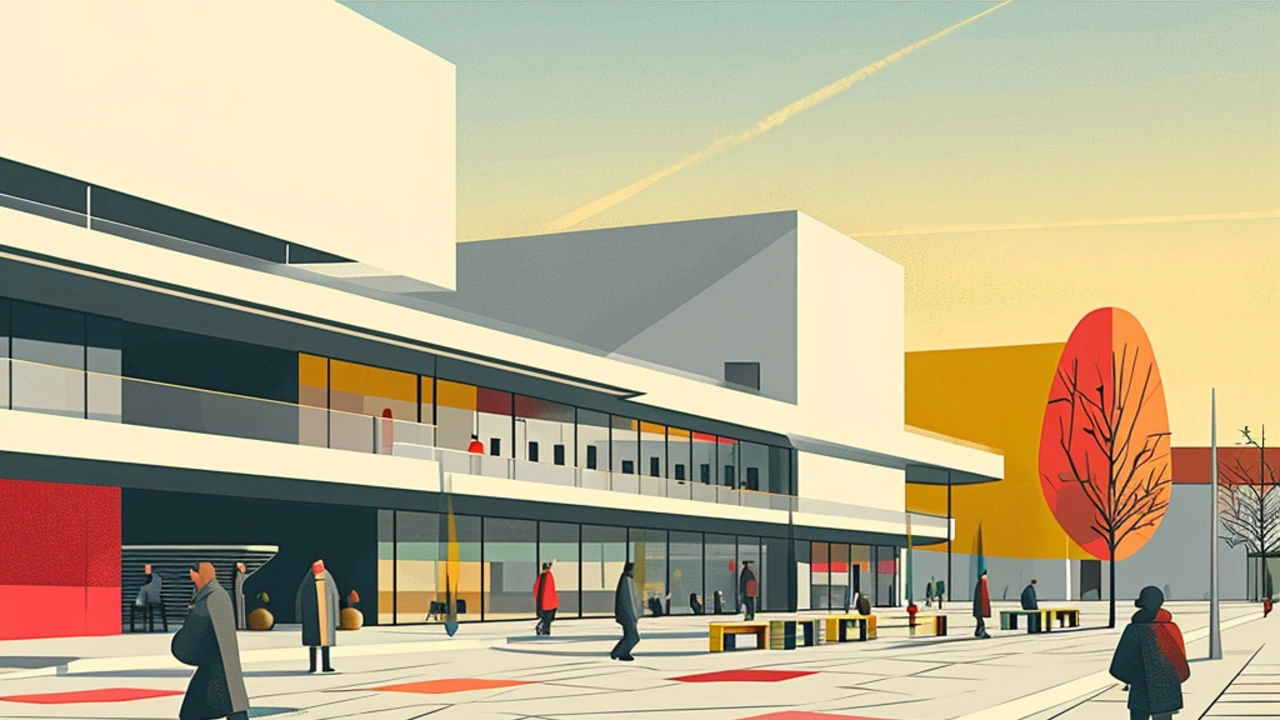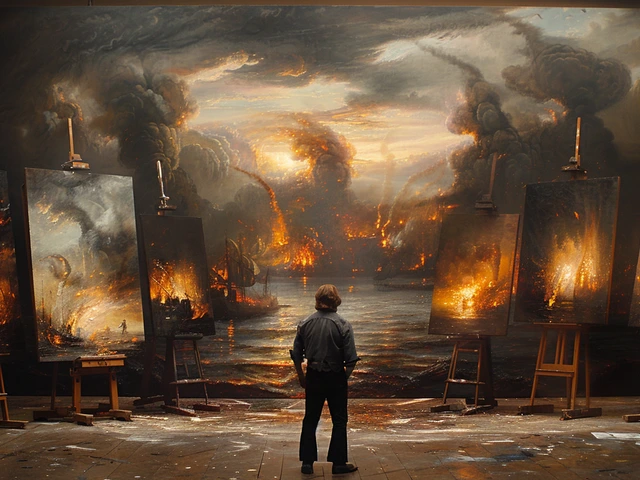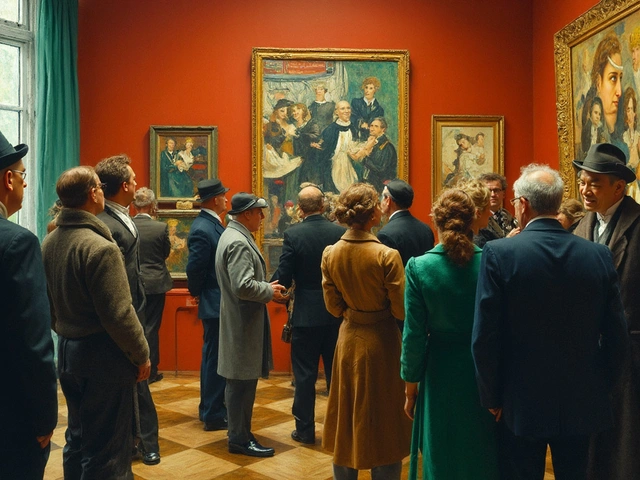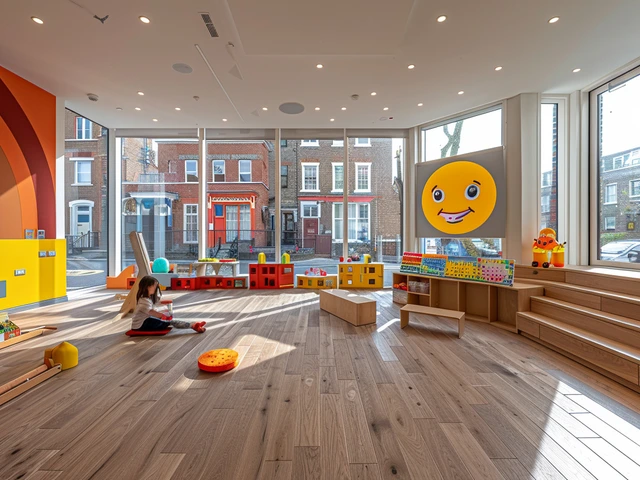The Birth of Bauhaus: When Art Met Architecture
The Bauhaus art movement, founded by Walter Gropius in Germany in 1919, continues to cause ripples even in contemporary art and design. Contrary to popular belief, this art movement wasn't created in a vacuum. Like the sprouting seed that needs the ground to nurture it, the rise of Bauhaus was facilitated by the sociopolitical environment post the First World War. It was a response to the crumpled world yearning for a fresh, unifying perspective that would be as pragmatic as it was artistic.
One needs to put oneself in the shoes of a bruised, war-torn society to truly appreciate why Bauhaus was conceived. Imagine the chaos of interwar Germany, battered by the shackles of Versailles' treaty and experiencing an economical downfall. Amidst such turbulence, there was a burgeoning desire in the people for functionality, simplicity, and rationality. Here was a generation eager to heal, to rebuild, and to progress. And Bauhaus became the flux that welded the society's practical needs with an aesthetic excellence.
Sensitive to the demands of his time, Gropius aimed to create a "total" work of art (Gesamtkunstwerk) in which all artistic mediums, including architecture, would eventually be unified. He aspired to erase the outworn boundary between fine arts and applied arts, the mental roadblock that considered the two as separate islands. For him, it was high time that art leaped out of the canvas and merged with everyday objects and buildings.
Laughing today at how my curious little August once asked, "Dad, why can't homes be as colourful as my drawing book?" I realize how inherently human it is to want art to underscore our lives. The desire for the two to merge is instinctive and anything but unnatural. Just as Gropius had envisioned, even a hundred years later, we are continually attempting to draw art out of the galleries and into our everyday lives.
The Philosophy of Bauhaus: Form Follows Function
Bauhaus's distinctive philosophy is summed up in three words: 'Form follows function'. This wasn't merely a rule of thumb for aesthetics, but rather a complete revamp of the way we perceive and produce art. It implied that the visual appearance of an object or a building should be based on its intended function or purpose. In simple terms, the way something looks should be determined by its use rather than merely its artistic value.
However, to imagine that Bauhaus discarded the artistic aspect in favour of utility would be an incorrect assumption. This philosophy promoted a balance between the two, a beautiful synergy where purposefulness did not rob an object or structure of its aesthetic appeal. Rather, it gave the artist or designer a more meaningful language to converse with their audience. A language that wasn't divorced from the realities of life but was a pleasant marriage of the artistic and the practical.
Heck, even my kids Jules and August have inadvertently adopted this philosophy. Jules, who is a budding poet, often reaches out for an understanding of the world about her and presents it to her readers in her creatively knitted verses. August, a science whiz, loves inventing bizarre contraptions that make our lives easier and our house quirkier. One day, if you find a cat-friendly sprinkle-dispensing machine, you would know who to credit it to.
Bauhaus and the Modern World: Influencing Contemporary Design
Bauhaus has left an indelible mark on modern design. From furniture to typography to architecture, the impact of this German school of art is visible in almost everything that surrounds us. The clean lines, uncluttered spaces, and minimalist designs that find prevalence in today's age of fast-paced consumerism have Bauhaus to thank for it.
Think about it - the modern skyscrapers you see around, the ergonomic chairs in your office, the crisp fonts in the books you read, that chic coffee mug you sip your morning brew from - Bauhaus is omnipresent. Its imprints can be found in the iPhones we use, the IKEA flat-packs we assemble, and even in the Google logo we glimpse every day. Bauhaus aimed to improve lives and society through design and architecture, and it's still doing it a hundred years later!
Who knew that the Bauhaus style would even creep into my kids' rooms? Jules's favourite lamp - the one that perfectly illuminates her poetry book at night but doesn't disturb her little brother? Yes, that’s influenced by Bauhaus. Or that modern desk where August dreams up all his inventive designs? Again, Bauhaus.
Key Figures of Bauhaus: The Torchbearers of the Movement
From Walter Gropius to Wassily Kandinsky to Marcel Breuer, the Bauhaus boasts an impressive roster of architects, artists, and designers who were not just teachers but also revolutionaries in their fields. They not only nurtured the movement but also disseminated the principles of Bauhaus around the world with their exemplary work and innovation.
Each of these key figures brought something unique to the movement. While Gropius’s vision and leadership set the foundation of the Bauhaus, people like Paul Klee and Kandinsky contributed to its evolution through their avant-garde ideas about colour theory and form. Meanwhile, Breuer became a pioneer in the use of tubular steel in furniture, a material previously associated only with industrial settings.
Imagine being a fly on the wall when Kandinsky taught colour theory or when Breuer brought his revolutionary chair to the classroom. To owe our present-day design principles to these artistic rebels feels like sharing our lives with our ancestors. It's similar to how young Jules looks up at me in fascination as we talk about the constellations. There is no time limit to learning; we’re always standing on the shoulders of giants.
The Legacy of Bauhaus: A Timeless Aesthetic
Even after a century, Bauhaus remains timeless. Its aesthetic, embedded in practicality and balanced proportions, continues to appeal to many around the globe. If you ever find yourself wandering through the city of Tel Aviv or exploring the cityscape of Chicago, you'll witness the vast influence of Bauhaus, communicated through the sheer number of buildings created in its style.
Bauhaus's functionalist paradigm has been distilled and adapted to fit diverse contexts. The essence of Bauhaus transcends geographical and cultural barriers, continually impacting the realm of design with its emphasis on less being more. From the layout of our kitchen to a city's urban planning, there's always a conversation echoing the words of Ludwig Mies van der Rohe - the last director of the Bauhaus school - 'Less is more'.
Every time I step into my Siamese cat Sprinkles' space, furnished with modern pieces of furniture and fittings, enhanced with natural light and minimalist interiors, I am reminded of how Bauhaus is much more than an art movement. It is an attitude, a style of life that emphasizes the pleasure derived from rationality, simplicity and functionality.
Bauhaus: Today and Tomorrow
The Bauhaus left its footprints not only through the past century but also strides confidently into the future. With our society becoming progressively digital, Bauhaus's principles guide the design of interfaces we engage with every day. The aesthetic of flat design, clean lines, and harmonious colour palettes seen in current web design and mobile applications are heavily influenced by Bauhaus.
As we step into the future, it seems pretty clear that Bauhaus’s influence won't slow down any time soon. Its legacy continues to evolve and reshape itself to fit our changing societal needs and advance with our digital shift. From the virtual reality arenas to the world of 3D printing, Bauhaus imparts a sense of direction to the emerging trends. The universal application of its principles makes it possible for Bauhaus to keep reinventing itself and to maintain its relevance to the changing times.
So, when we gather around August's latest VR game invention in our minimalist living room, smiling and laughing with a sense of joy and comfort, I can't help but think of Walter Gropius. His vision of a unified work of art that turns functional spaces into emotional sanctuaries still rings true today making Bauhaus the art movement that never dies.




